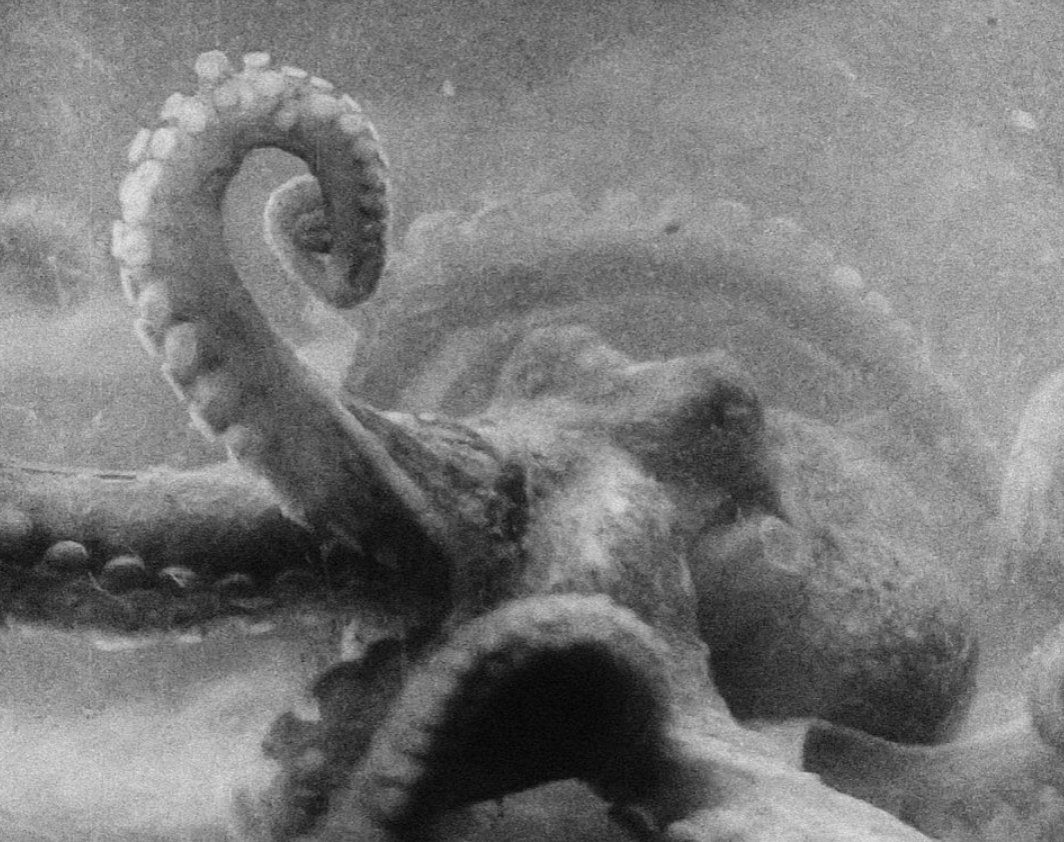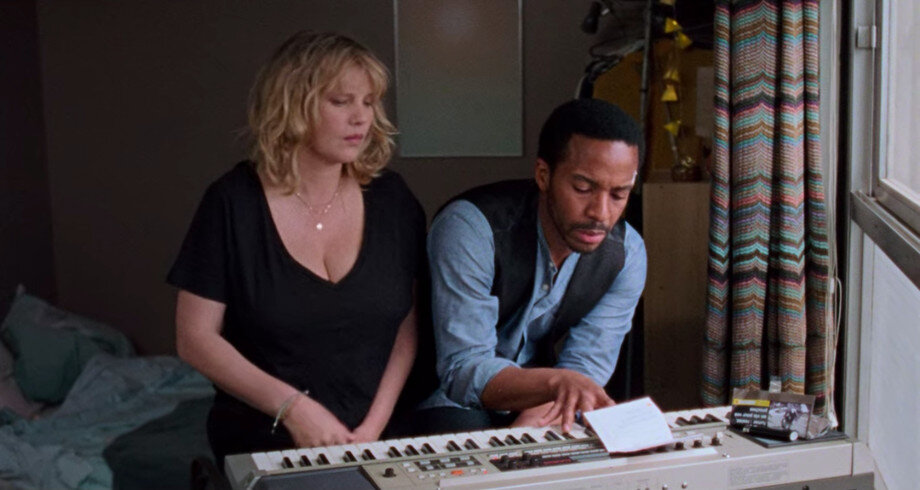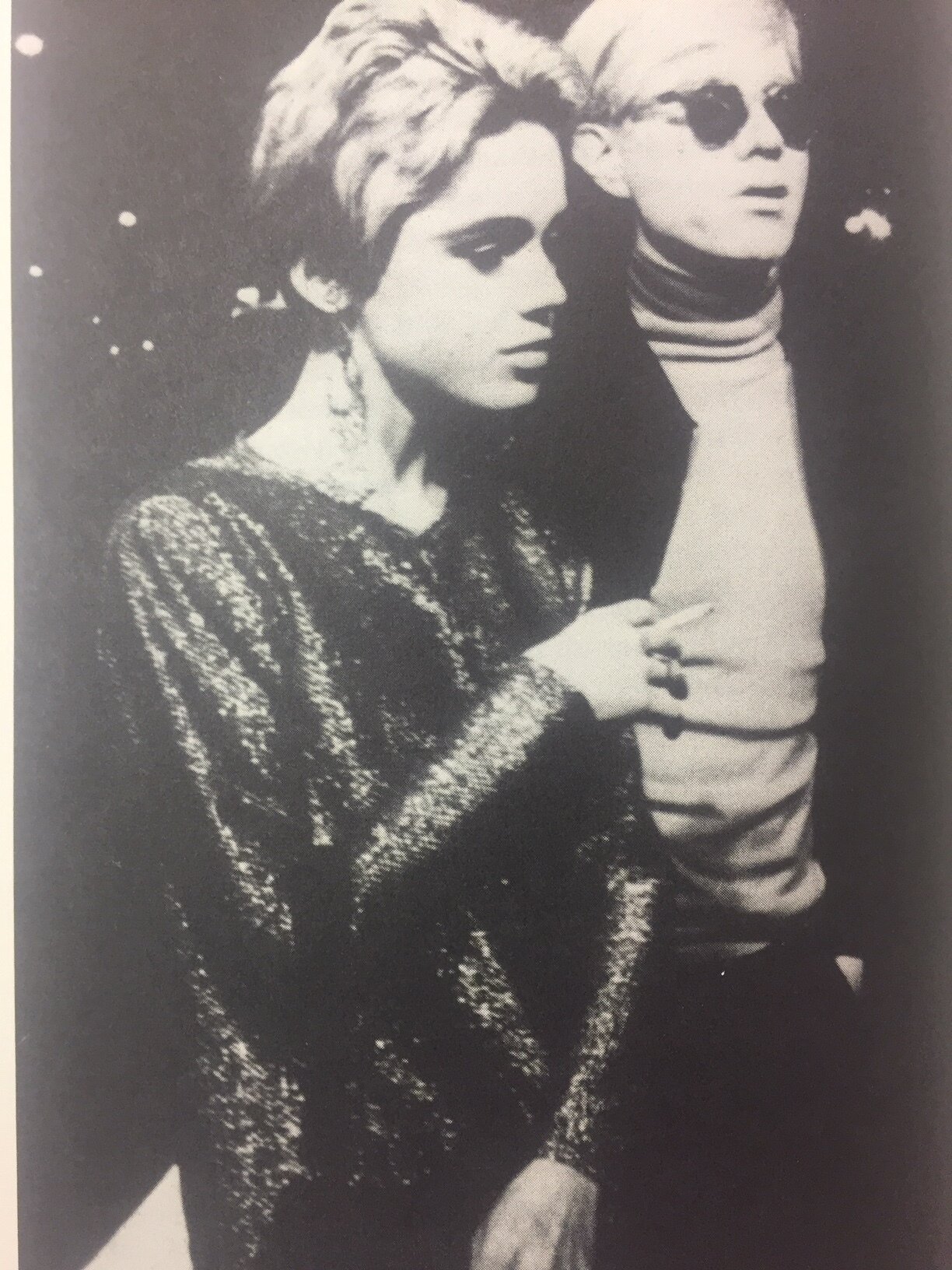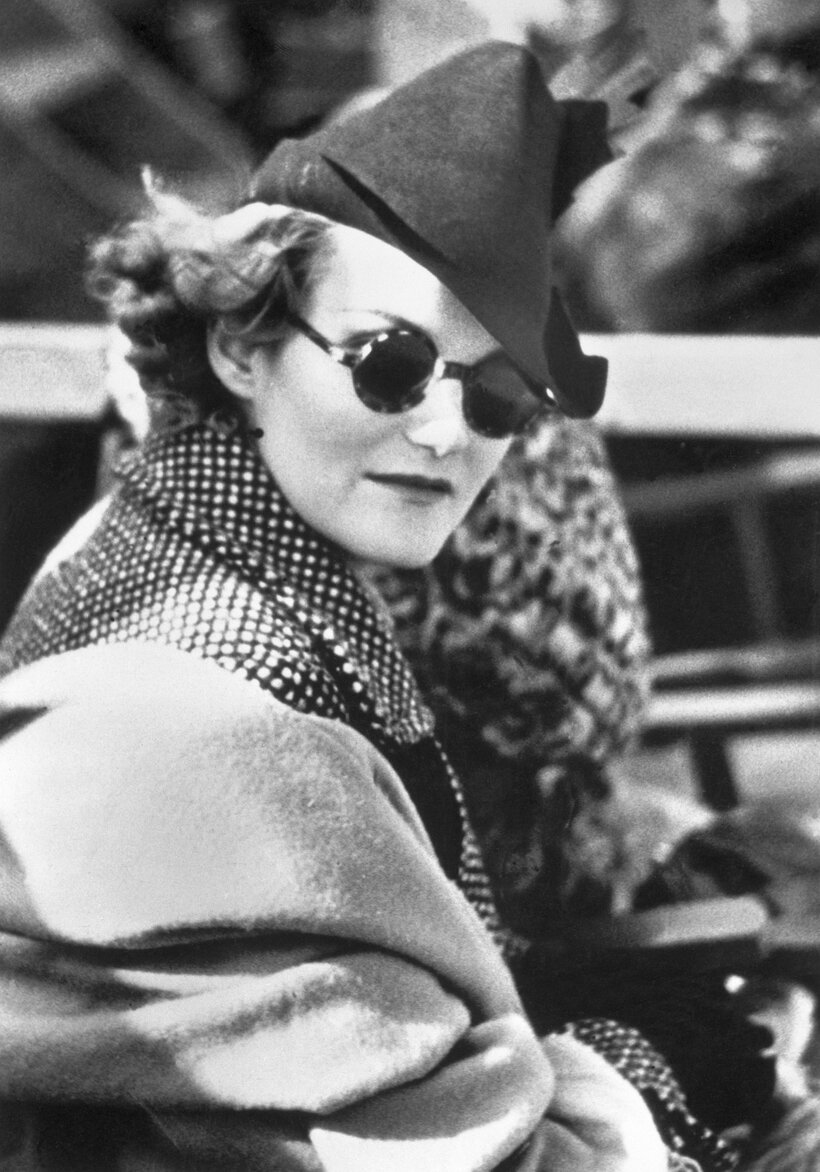In Balanchine's Classroom, the new documentary on American ballet's Russian-born hero, I found a glimpse of SAB, the school I had attended so long ago as well as how it was to be in the Company which I never experienced. There was respect, grace, passion, and the total dedication of almost every person who walked through the doors. Balanchine was like a guru to so many of his dancers.
Most, or many, like Merrill Ashley, were utterly devoted and now teach the master's methods with unwavering fierceness. Carrying on the traditions and very specific knowledge is a gift to us all. Heather Watts is irreverent and funny and has some distance on herself as a Cali Girl and how hard it was to be a Balanchine dancer. Eddie Villella exposes his own checkered history, and is all the more human for it. Jacques d'Amboise was always a favorite and devoted his life not just to Balanchine, but to children who would not grow into Balanchine dancers.
Missing from this very fine and closely observed documentary with rare found footage are any of the nay sayers. Where is Gelsey Kirkland, for example? But Connie Hochman, the director who was also once a student, was sensitive to Balanchine's memory. What she has given us instead is a delicate homage, and that alone is worthy. Brava.
The Octopus' Companion: The Hermit Crab
Recently I suggested The Octopus (La Pieuvre), a short silent film by Jean Painleve from 1928 available for free at the Cinematheque Francaise website platform, Henri.
Now, a companion piece, The Hermit Crab (Le Bernard l'ermite), 1929, only 14 minutes, has been loaded and it is equally worth your while.
This is a charming film which totally anthropomorphizes the life and proclivities of the sea creature who inhabits homes which do not belong to it. It not only is a squatter in abandon shells, but actively kicks out current tenants in the most aggressive (but to our eyes, delightful) manner. It's a housing crisis of a very different kind.
The film highlights the crab's quest for shelter, and will give you a small bit of relief from events in Afghanistan and Haiti which have overwhelmed us and make me feel that no amount of any kind of art or creativity can mitigate what is truly an horrific state of affairs.
Janet Bishop Takes David Park on the Road
Janet Bishop’s traveling retrospective of the work of David Park from SF MoMA came during pandemic and wasn’t as widely seen as it should have been. This painting from 1957, Bather With Knee Up, is typical of a subject that he often returned to and which looks utterly modern alongside the current return to figuration. Yet there are echoes of German Expressionism which he may have seen from exhibitions in the Bay Area. The solid figure of the man seems as universal as a Michelangelo. Park worked often from memory in his later work but used sketches to refine or adjust. Though Diebenkorn departed from figuration Park did not live long enough for us to know what would have become of his style. This work will presumably eventually be on view in Thom Mayne’s new building for the Orange County Museum. As we head into LA Gallery weekend and Felix Art Fair it will be interesting to see where California artists are today.
Silent Octopus
If you've seen My Octopus Teacher, this year's Oscar winning documentary, you will surely be fascinated by a very short French documentary, La Pieuvre, by Jean Painleve from 1928 available for free on the Cinematheque Francaise's website via their wonderful platform of goodies, Henri. Take the time to have a look. It's silent, so no translation necessary.
Released in December of 1928 for the inauguration of the Studio Diamant, the film was the first widely distributed 'biology film' of the filmmaker. Painleve (great name, translation: raised bread), the son of the minister of war, was apparently a jack-of-all-trades who established this tiny film studio at the summer home of relatives of his girlfriend. He had discovered octopuses at the age of nine in Brittany and they were the impetus for his degree in zoology.
I was devastated at first by the rough handling of this specimen (Are there multiples?) both in and out of an aquarium but remembered it wasn't until recently that we gave enough credence to the brains of species other than our own. Still, in the film’s fourteen minutes, you will become attached. (One colorized moment of the octopus scaling a children's doll is particularly haunting.)
Also for octopus lovers (I will never eat one again), a marvelous children's book that takes as it point of departure the true escape of the octopus from the aquarium in New Zealand in 2016, Inky's Great Escape (there are many versions, the one you want is by Casey Lyall).
The Violin Stories in Art
Violin Stories: I first saw this lovely painting Girl with Violin from 1928. by Antonietta Raphael in Lucia Re's Magazzino Museum lecture on Italian art couples (see yesterday's post).
Raphael had been a serious student of music by way of London and Paris, but she returned to Rome to attend art school and met her lifelong partner Mario Mafai with whom she had three talented daughters. She was a sculptor and painter, and the center of a free spirited group which prized naturalism.
Then last night, in harmonic convergence I stumbled on two films via Kanopy (if you don't know this free film service from your local library now you do) which had music and love at their centers.
Un Coeur En Hiver (A Heart in Winter) is the story of the love triangle between a young and beautiful violinist (Emmanuelle Beart), her older lover, and his business partner (Daniel Auteuil) in a violin fabrication and repair shop. But that is not really the subject. The subject is love and freedom.
Then I saw Pure, with a very young Alicia Vikander in her film debut playing a n'er do well, violent young woman who falls in love with Mozart, then procures a job as a receptionist at the symphony. She has a wild affair with the married conductor who then abandons her. Much trouble and many reversals ensue.
All this against the backdrop of live music returning to the Hollywood Bowl this week, where Gustavo Dudamel is conducting a series for front line workers. Gustavo is leaving at least partially for Paris--I don't blame him. The news today that Europe is reopening very soon has lifted my heart.
Dancing Through Another Round
Body language is everything right now. Did you feel like dancing yesterday? We had a power failure in LA --so common now, between fires and earthquakes we have rolling blackouts--so I couldn't watch the Inaugural show--but I felt like @theofficialmads, the tall, hunky, gorgeous Danish actor in Another Round, the new film from Thomas Vinterberg. I wanted to bust a move.
The film is a masterpiece of understatement and cool even as the four male protagonists-teachers in a secondary school--have their individual meltdowns. Ostensibly to see if a theory about maintaining a certain blood alcohol level they read about will hold water(it does, and then it spectacularly doesn't), it's really about pinning your hopes on an external force to ramp your creativity, your intelligence, your grace, whatever it is that you haven't got going as much as you might wish. Guess how that turns out.
The guys try to coax Martin (Mikkelsen) through the whole film to get up and dance. They dance. But Martin resists. Then at the very end when things have gone from bad to worse in his marriage, there is finally a ray of hope, and he bursts into spontaneous movement on a pier surrounded by his graduating students (all wonderful).
Mikkelsen was trained as a @marthagrahamdance dancer--which seems to be how I am seeing the world this week--and that ability to express things with your middle is on full display in the film. Once cast as a villain, he now seems the embodiment of male angst and joy.
Ammonite
Coming not long after the lyrical, spare but haunting Celine Sciamma film, Portrait of a Lady on Fire, which set a very high bar, Ammonite directed by Francis Lee and starring the more well known actors Kate Winslet and Saoirse Ronan, could not help but be compared in this newish mini genre of period lesbian filmmaking by the sea. And yet it stands firmly on its own.
Mary (Winslet) is an intense, determined, quietly raging sea fossil hunter who lives with her aging mother in the harsh seaside town of Lyme Regis having been canonized with an early ichthyosaur discovery enshrined in the British museum.(The script is loosely based on the true life story of paleontologist Mary Anning) The life of the spinster who has dedicated herself to her self taught work, alas now mostly touristic to make ends meet, is upended when the young, wealthy Charlotte is entrusted to her care by her neglectful husband. Ostensibly to teach her something of the trade while taking the sea air, Mary becomes a full time caretaker when she falls ill. Therein ensues the at first tentative, then wildly passionate, hermetic love affair between the two.
Though there aren't surprises in the narrative, the acting and the respectful filmmaking are indeed sublime, and my question about the money-shot lovemaking scene arises not for its delicious eroticism but for its 21st century abandonment.
Winslet, who has slowly transformed from beautiful leading lady into a character actress (see also the 2019 Blackbird) is entirely believable and Ronan continues to find her way to a very diverse, substantial career. The film is welcome as a serious, elegant, sensual counterpoint to world events, a lockdown of another kind.
More Rozier
Continuing in its restoration of the work of Jacques Rozier (see my story for Airmail on his Bardot film), the @CinemathequeFr has just loaded a charming early Jacques Rozier short, Blue Jeans, made when he was just 30, which showcases this early member of the Nouvelle Vague's insouciant take on life, love, and the Cote d’Azur. It's available for free on their Henri (named after the founder, Henri Langlois) channel, with English titles along with many other jewels.
This time we find ourselves with two young, gorgeous, hotshot drageurs (the French word for pickup artists is just so much more efficient) who wear tucked in white shirts and blue jeans (no longer called blue, but then, only blue, appropriated from the farm) who don't consider a day's work done until they have found some lovelies to share the night with. Hunting for prey on their Vespas in and around Cannes, they happen upon two wasp-waisted, short shorted, high heeled wearing beauties who fit the bill and after some to and fro, hop aboard to trip the life fantastic. The beach is the scene of their making out, their dancing (the chacha!) and eventually their come-uppance. Actual work plays no role, being on the make, without money, turns out to be a full-time pursuit. All this to a Cuban soundtrack that lifts the spirits. Jean Luc Godard wrote, " A buoyant short, young and beautiful like the body of a 20 year old as Arthur Rimbaud has described it."
More Rozier at the Cinematheque
Continuing in its restoration of the work of Jacques Rozier (see my story for Air Mail on his Bardot film), the Cinematheque Française has just loaded a charming early Jacques Rozier short, Blue Jeans, made when he was just 30, which showcases this early member of the Nouvelle Vague's insouciant take on life, love, and the Cote d’Azur. It's available for free on their Henri (named after the founder, Henri Langlois) channel, with English titles along with many other jewels.
This time we find ourselves with two young, gorgeous, hotshot drageurs (the French word for pick up artists is just so much more efficient) who wear tucked in white shirts and blue jeans (no longer called blue, but then, only blue, appropriated from the farm) who don't consider a day's work done until they have found some lovelies to share the night with. Hunting for prey on their Vespas in and around Cannes, they happen upon two wasp-waisted, short shorted, high heeled wearing beauties who fit the bill and after some to and fro, hop aboard to trip the life fantastic. The beach is the scene of their making out, their dancing (the chacha!) and eventually their come-uppance. Actual work plays no role, being on the make, without money, turns out to be a full-time pursuit. All this to a Cuban soundtrack that lifts the spirits. Jean Luc Godard wrote, " A buoyant short, young and beautiful like the body of a 20 year old as Arthur Rimbaud has described it."
Tokyo Ride
The film, Tokyo Ride, part of this year's Architecture & Design Film Festival begins in a rainstorm. Ryue Nishizawa-half of the Pritzker winning architectural duo SANAA- picks up filmmakers @bekalemoine (whose architecture films are in MoMA's collection) and after apologies for surprising the camera on him so soon, they begin a ride around Tokyo in Nishizawa's beloved Alfa Romeo whom he affectionately calls Giulia. And so begins a Cinema Verite, Nouvelle Vague-esque ride. It's utterly charming.
With a dour face that breaks into a smile, a Beatles bowl haircut and a straight man delivery, Nishizawa is an unconventional tour guide. In floral and polka dotted shirts, he opines on Tokyo, the differences between East and West architecture (Japanese people love newness; Europeans are armed, Japanese architecture like a verb, European like a noun, KenzoTange and Saarinen must have been in some kind of interstellar pre-internet communication etc). He loves Italian cars for their soulfulness, German cars are stricter and indeed the car is as much a character as the filmmakers who try to be unobtrusive but are part of the ride.
A visit to a soba shop for lunch is fun but the real eye opener is a visit to his partner Sejima's house which he designed for her and her parents.It has something of Eames in its plan and transparency but also traces of Mies and Le Corbu--his stated favorites. Sejima and Nishizawa expose their history of bickering (their personal relationship is somewhat mysterious, some larger projects done together, others individually) and if you ever wanted to know what goes on behind closed architectural doors, this is a great place to start. In her six inch platform shoes and Louise Brooks haircut she is both self effacing and determined. After a visit to her office (his, hers, their offices all in same building) and a tour of Tokyo stadiums, the film ends at the house of Nishizawa's friend and client Moriyama serving up some gorgeous take out sushi (don't see this film hungry).
I'm looking forward to other films about Paul Williams and Nakashima so check out the ADfilmfest website.
Casa Malaparte
The Mayan inflected steps of the modernist Casa Malaparte in a remote section of Capri were the location for the mounting despair of Paul (Michel Piccoli) as he realized his wife the prized Camille (Brigitte Bardot) was slipping away from him, the pawn in a very expensive game of Hollywood-in-Italy, Le Mepris (Contempt) Godard used the Casa as another actor in the film, its broad sun roof overlooking the Gulf of Salerno, its glass window framing the ménage a quatre, its crumbling orange walls standing in for the decaying marriage. The house had been commissioned by Malaparte from Libera, a well known architect of the time but largely finished with the help of a local stonemason. The interior furnishings are currently the subject of a show at Gagosian London but the house itself is now home to a foundation. Many architects have paid it homage but none more searingly than Godard who shot the final scenes of his memorable fabulistic film from the roof. See my story on Air Mail News for the behind the scenes of the film.
Paparazzi Fever: my story for Air Mail News
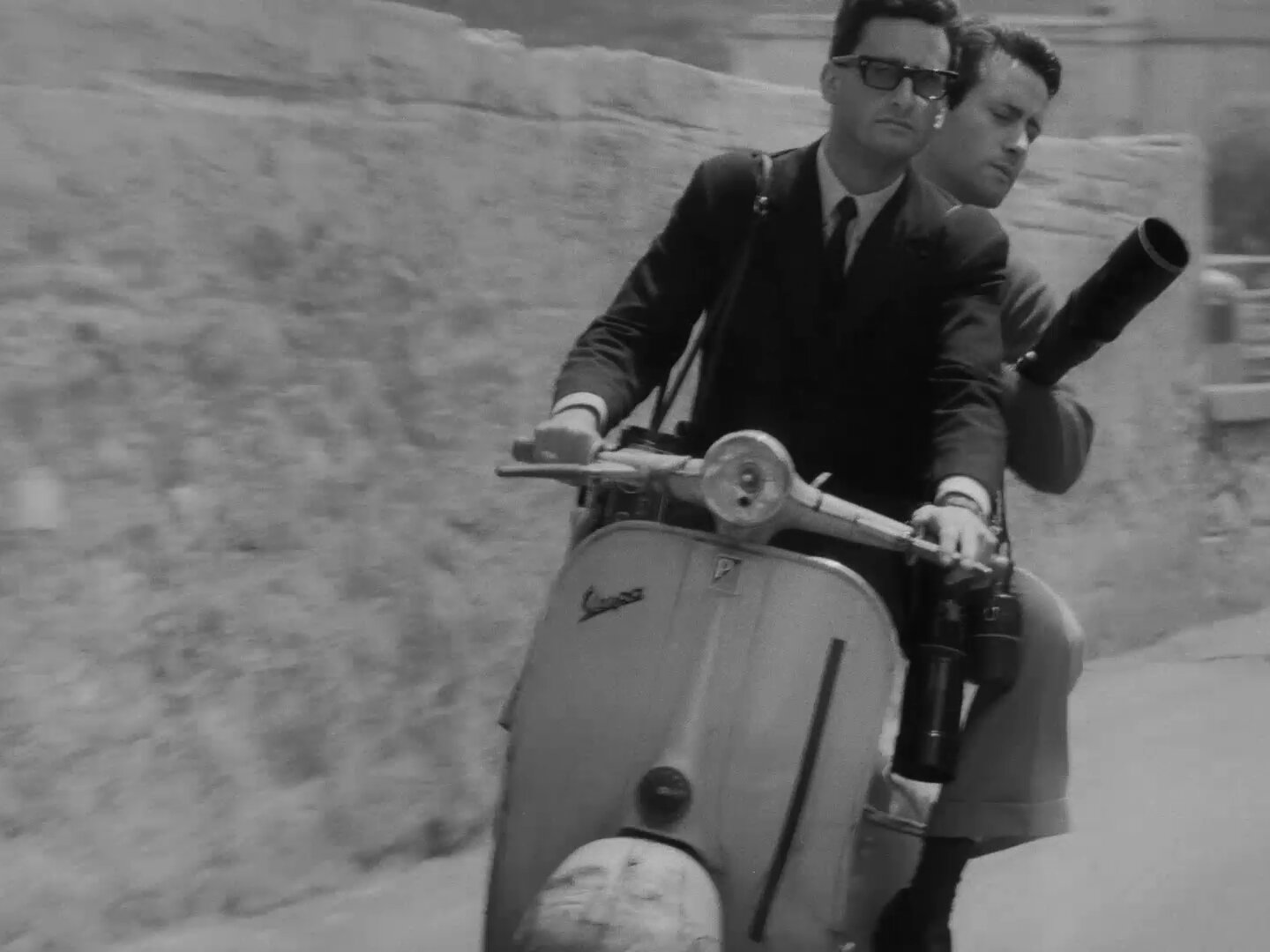
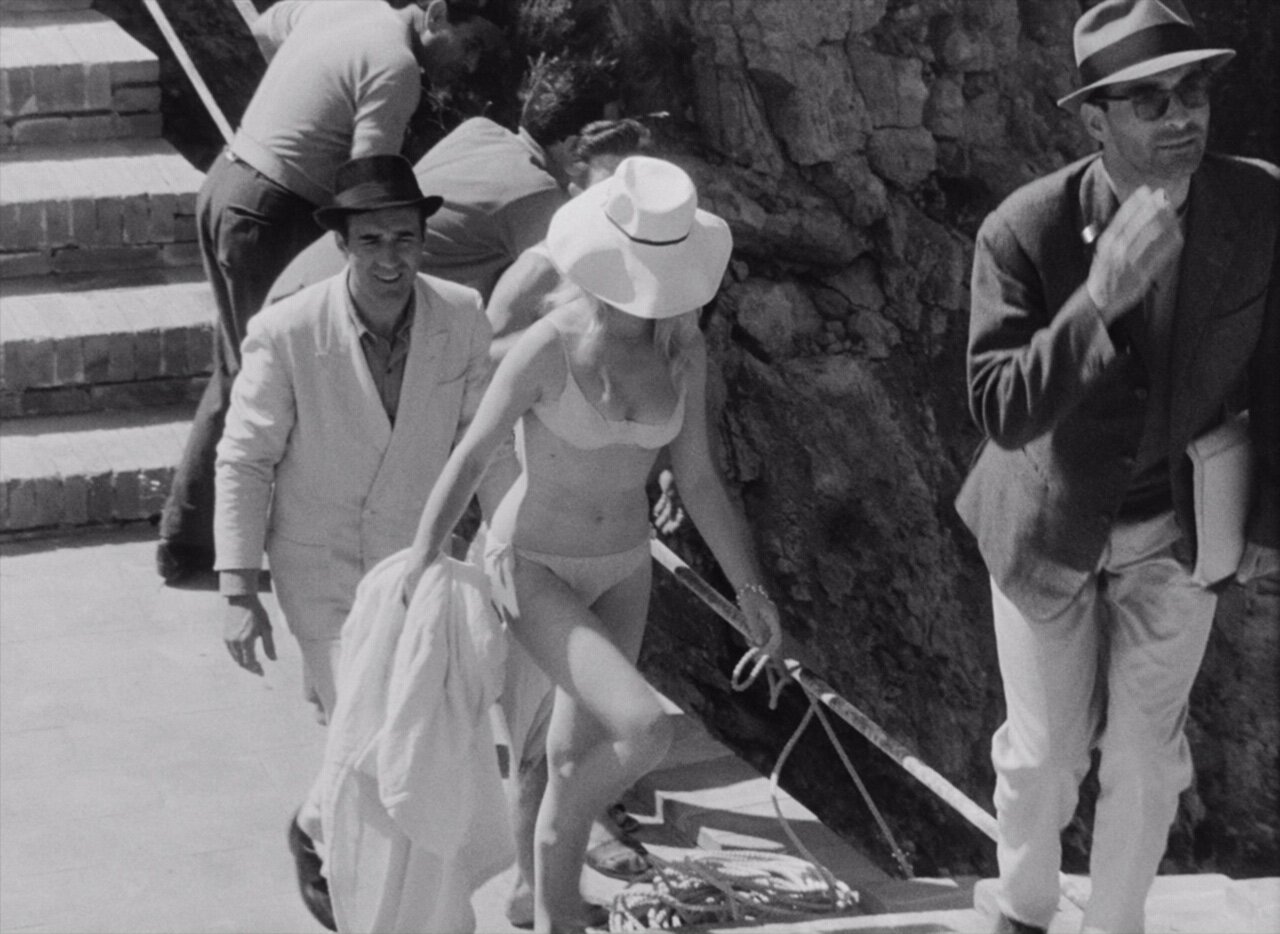
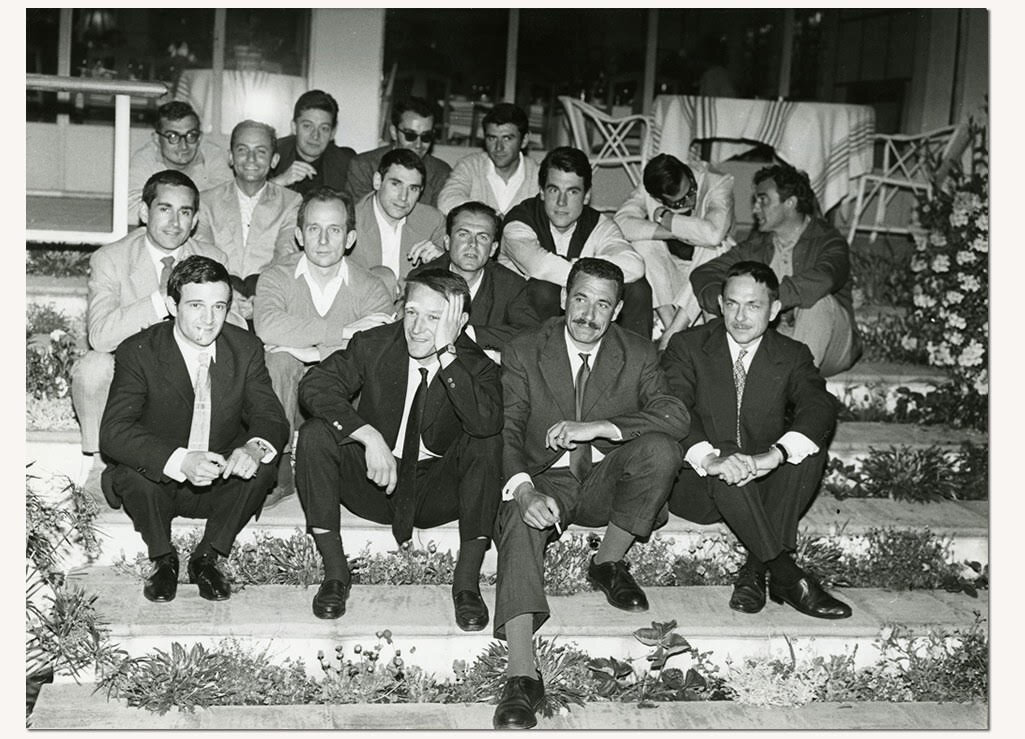
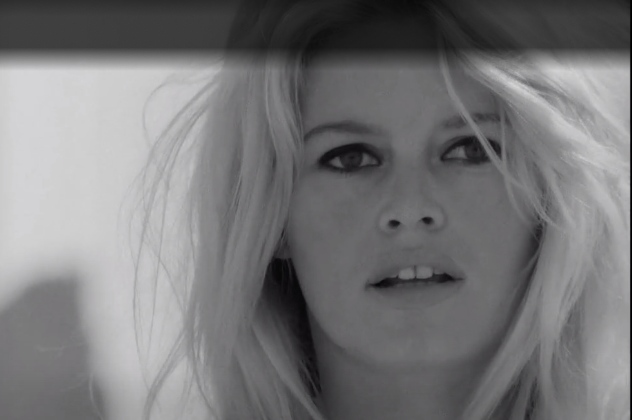
Jean-Luc Godard’s classic 1963 film Contempt— his most commercially successful feature— is best known for its leading lady, ‘sex kitten’ Brigitte Bardot, the main event in an all-star cast that included Michel Piccoli, Jack Palance, and the legendary director Fritz Lang. It also has the pedigree of its source material: a novel by Alberto Moravia; the sun, sand, and sea of the dazzling Isle of Capri; the modernist Casa Malaparte as its indelible final location; and Godard himself, the foremost exponent of the New Wave, here deconstructing a marriage, a myth, the act of selling out, and cinema itself. But the lavish production of Contempt also served as a springboard for a pair of illuminating short black-and-white films by Jacques Rozier, capturing the zeitgeist of that singular moment now available on Criterion Channel.
Godard and Rozier had become friendly in the late 1950’s (see them in the back row in this historic image above of the New Wave directors after the Cannes Film Festival of 1959) and Godard accepted Rozier’s proposal to film a behind-the-scenes record of Contempt. But once on set Rozier had another idea. Learn what happened in my story this week for Air Mail.
The Eddy: an exceptional new series from Netflix
The Netflix streaming series The Eddy is a very good choice for anyone who:
a) loves music, especially jazz
b) loves Paris, and its lesser known banlieux
c) appreciates cinema verite style hand held filmmaking
d) liked La La Land--the first two episodes are directed by Damien Chazelle
e) loved Joanna Kulig in Oscar nominee Cold War—and here just as incredible
f) appreciates precise, gritty character studies and excellent acting
g) is willing to forgive some narrative slip-ups in favor of watching an exuberant, moving, joyful and also tragic slice of life
The new Seberg biopic from Amazon
Seberg, the biopic starring Kristen Stewart is finally being released tomorrow on Amazon after an almost year long slog through film festivals, award season and a theatrical release. This might instead be a film that benefits from a small screen treatment, an all-too-believable dark and twisted melodrama of J Edgar Hoover's overreach during a second wave of blacklisting and torment after McCarthyism. Seberg begins with Otto Preminger's cropped Joan of Arc in flames but leaves out the seminal Godard/Paris years and jumps instead to her waning marriage with her second husband Romain Gary who was himself a notorious French hero and literary figure. Her abrupt awakening as a champion and patron of civil rights and (alleged) affair with black activist stretch credulity yet Seberg was naive. Her subsequent downfall into pills, depression and abject fear as the FBI spies on her during Cointelpro--their effort to discredit and bring down Communists and other dissidents-- is supported by documents that have come to light. Seberg became pregnant while filming in Mexico and the child-whose parentage became added fodder for FBI harassment-- died shortly after birth. Director Benedict Andrews adds a guilt-stricken FBI agent who eventually confesses as he hands over her purloined files. Seberg became increasingly unstable, far from the Breathless gamine, and though she worked in Europe, she eventually died of an overdose in a parked car in Paris-never definitively proved as a suicide. She is here inhabited, very skillfully and movingly, by Stewart and the hyperbolic invented parts fall away if you keep your eye on her, and the superior production design and costumes.
Image courtesy Amazon Studios.
Robert Smithson and Nancy Holt vamp and camp in a sendup of Coastal artists
In Robert Smithson's and Nancy Holt's hilarious film, East Coast, West Coast, loaded online Friday via the Holt Smithson Foundation IG, the old tropes of the two historically pugilistic factions of the deep blue coastal US states of California and New York are brilliantly played out by Holt, representing the sophisticated, Eastern intellectual art world maven, and Smithson, the hippy dippy Western love child artist. The grainy verite was filmed at Joan Jonas's New York house and she sits atop a bookshelf in the rear, a hulking, skeptical Greek chorus of one. Holt is brainy interlocutor and Smithson the fey, reluctant interviewee as they discuss bicycles, mapping and the art world. Holt--who is trying to get Smithson's character to wake up and smell the money says: If you don't consider the money part of art you can be a victim. Smithson looking away and abashed: I'm just out there doing my thing in the fresh air. I want to ranch in Fresno and groove in the grass and dig nature...I make art man...Holt: You're some kind of mystical pragmatist; Smithson: Definitions are for uptight types...I'm on my way to India, I don't belong here, you're just a New Yorker you don't know were its at, you just need to let yourself feel things...out in California I had my own little garden and organic foods...you're a bad trip. Stop thinking and start feeling, man! These cliches are still bandied about even as the two cities have become more and more alike, epicenters of the Pandemic. Don't miss this.
Remembering Jean Stein's illuminating bio of Edie Sedgwick
While I eagerly await my copy of Blake Gopnik’s new Warhol biography, I went back to Jean Stein’s riveting portrait of Edie Sedgwick and her world (old line WASP wealth and then the Factory), Edie, that appeared in 1982. Stein who was both of the world (a Hollywood daughter) and its excellent observer (via the Paris Review and George Plimpton, who edited this book) captured on-the-record oral histories that are still astounding in their you-are-theredness. Walter Hopps, curator, museum director, art dealer, nurterer of so many West Coast artists is on the record as are Truman Capote, Robert Rauschenberg, Jasper Johns, denizens of the Factory, and of course, Warhol himself. Edie flamed brightly, erratically and died at the age of 28 of an overdose, joining a few of her other siblings who had not made it out of their twenties. Stein jumped from her window at the age of 83, which now casts an even more somber shade on this tragic tale.
Photo copyright by Nat Finkelstein, Used with permission of Nat Finkelstein Estate; Andy Warhol and Edie Sedgwick outside Lincoln Center
Louise Brooks is the most beautiful widow in Pandora's Box
In this time of Covid mourning, there could be no more beautiful and seductive widow than Louise Brooks, here pictured at the trial for Dr. Schon in the iconic silent film that made her reputation, Pandora's Box directed by Georg Pabst in 1929 in Berlin. Brooks "walked away from film at the height of her glory" according to Lotte Eisner who profiled her, because "she was so bored of doing the same thing over and over." Brooks was very bright and went on to become a respected memoirist.Read Lulu in Hollywood for an insightful break into film history. Like Eve Babitz after her, she kind of nailed it.
Catherine Deneuve shelters under an Umbrella of Cherbourg
The Umbrellas of Cherbourg- a film by Jacques Demy, Agnes Varda’s husband-was the film that made Catherine Deneuve-sister of actress Francoise Dorleac-a star. Though later she became known for inscrutable (Belle de Jour) or icy (Repulsion) roles Umbrellas was an operetta in which everything was sung. When I listened to Così Fan Tutte from the Met Opera on Sunday while Covid-cleaning it reminded me that sometimes emotions are best expressed in song.
Always, forever Anna Karina
Anna Karina was on the lam or in some kind of mortal jeopardy like most of Godard’s heroines in the early years. Being on the run imposed certain cinematic restrictions that made for tight narrative and suspense. But she (and Seberg ) managed to look very chic in spite of it.
A new biography of Doris Duke surprises
It was impossible not to import our present-day conflicts over societal wealth disparities into a reading of the new Sallie Bingham biography of Doris Duke.
Duke inherited her fortune from her father Buck, a tobacco and energy baron, but tried to staunch an aching quest for legitimacy beyond her day job as the 'richest girl in the world' throughout her life. First she--and now her foundation-- was one of the most generous and consistent supporters of the arts, especially dance, one of her passions, but her tabloid-ridden life was troubled from the start. For me, her most extraordinary legacy is Shangri La,the Islamic palace she painstakingly re-created for herself at Diamond Head in Hawaii. Every inch was lovingly sourced and handcrafted and to go there is to enter, for a brief moment, a parallel world of history and grace. Then, my admiration for her knew no bounds.Please see more in my story for Air Mail, and of course, the book, just published by FSG.
Photo via Air Mail courtesy Bettman/Getty Images



